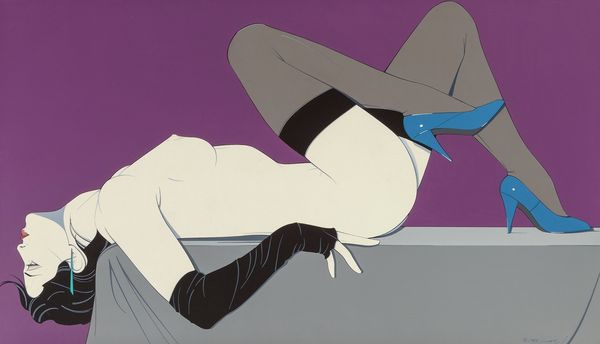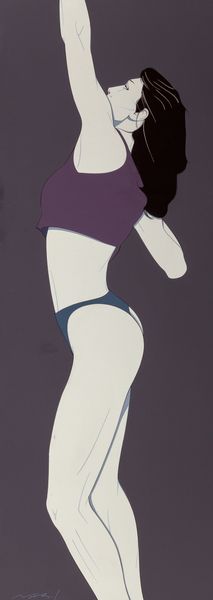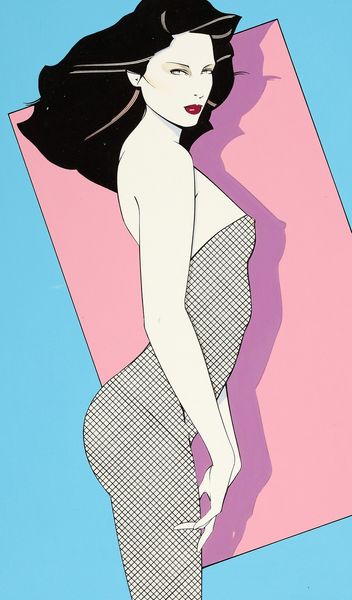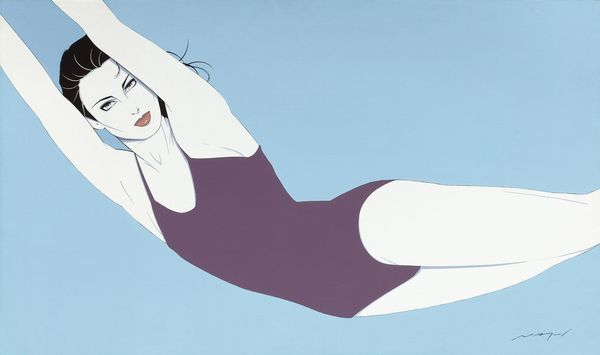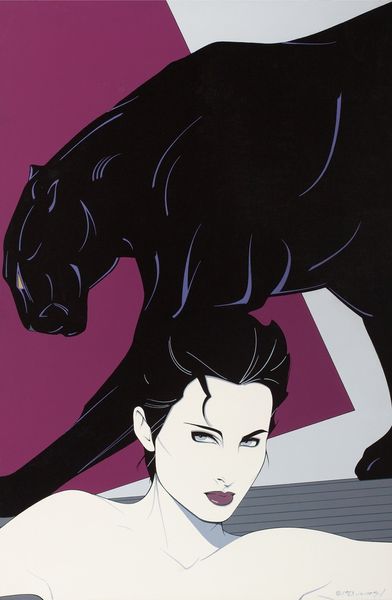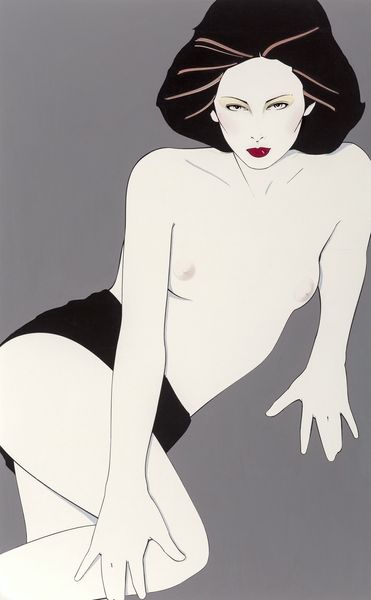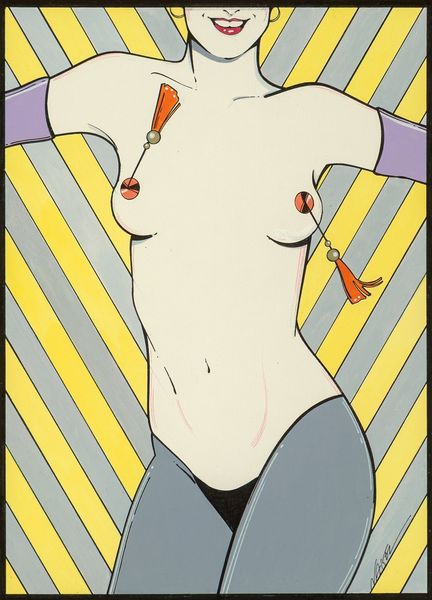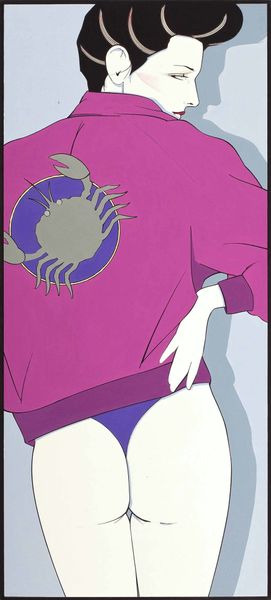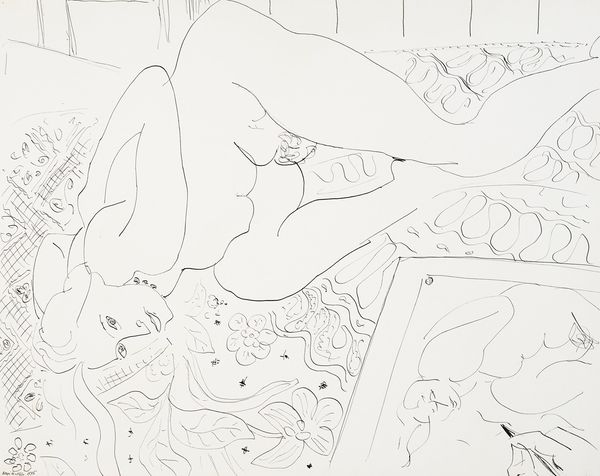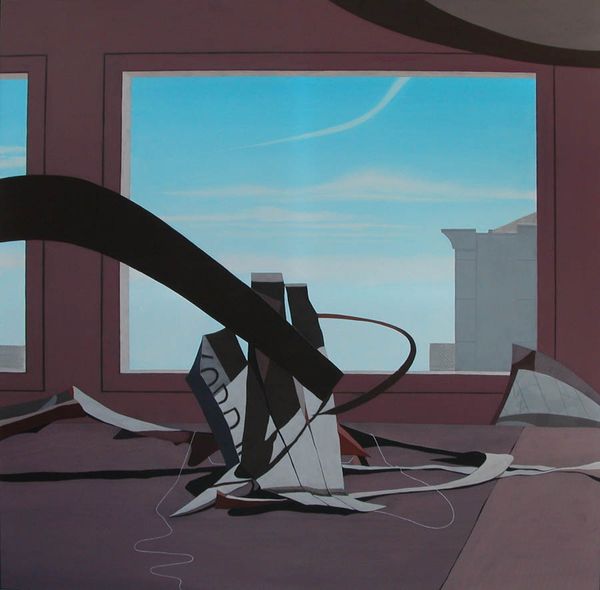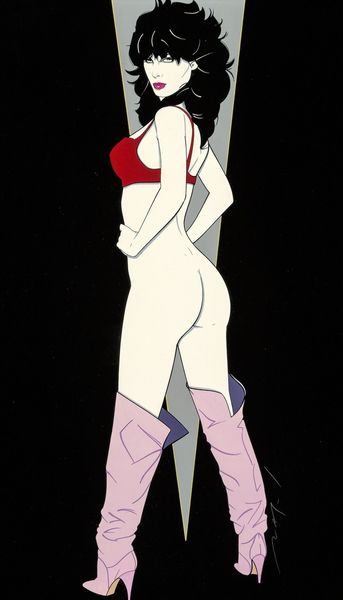
Copyright: Modern Artists: Artvee
Curator: Standing here, bathed in its subtle hues, I find myself oddly... tickled. Patrick Nagel's "Playboy 'A Tribute' illustration" from 1985, it’s all sharp angles and a suggestion of...something naughty. It feels very "Miami Vice" meets... a minimalist dream. What strikes you? Editor: My initial reaction is of an aesthetic entirely bound to its time, yet one that remains persistently intriguing. The clean lines and monochromatic palette, particularly in contrast to the hyper-sexualized imagery that frequently appears in Playboy, represent the cultural tensions that underpin representation itself. Curator: Exactly! Nagel's economy of line is brilliant. He gets the idea across with the fewest strokes possible. Those high-gloss boots, that delicate veil... it's a dance between concealing and revealing. She is there, but in what capacity? Does that dance serve a cultural purpose? Editor: Precisely. Consider the socio-political backdrop against which Nagel rose to prominence. During the 1980s, shifting dynamics between cultural perceptions of gender roles manifested across all layers of social expression. Nagel's distinctive technique simultaneously appropriates and distorts pre-existing frameworks—beckoning audiences toward new dialogues that expose art's intrinsic complicity with social progress and ideological control. Curator: You always bring me back to earth, but I love it! Still, there is something so dreamlike and enigmatic here. It transcends pure objectification because of the artist’s...dare I say... restraint? He allows the viewer to participate, to fill in the blanks. Is that where you see that shift in cultural perspective coming into play? Editor: In effect, Nagel's art exemplifies a shift toward more ambiguous expressions in cultural messaging. That being said, such ambiguities must also be viewed critically; one era's progressive messaging could be a future society's reinforcement of historically repressive cultural practices. The context of artistic creation—including the socio-political conditions—should serve as points of active reflection regarding who and what art truly serves. Curator: Oh, you delicious cynic. But I see it. Context is everything. All considered, what begins as visual enjoyment sparks more profound questioning if we choose to indulge. Editor: A sentiment I heartily support; Nagel has handed us not just an image but a lens to scrutinize our cultural past.
Comments
No comments
Be the first to comment and join the conversation on the ultimate creative platform.
